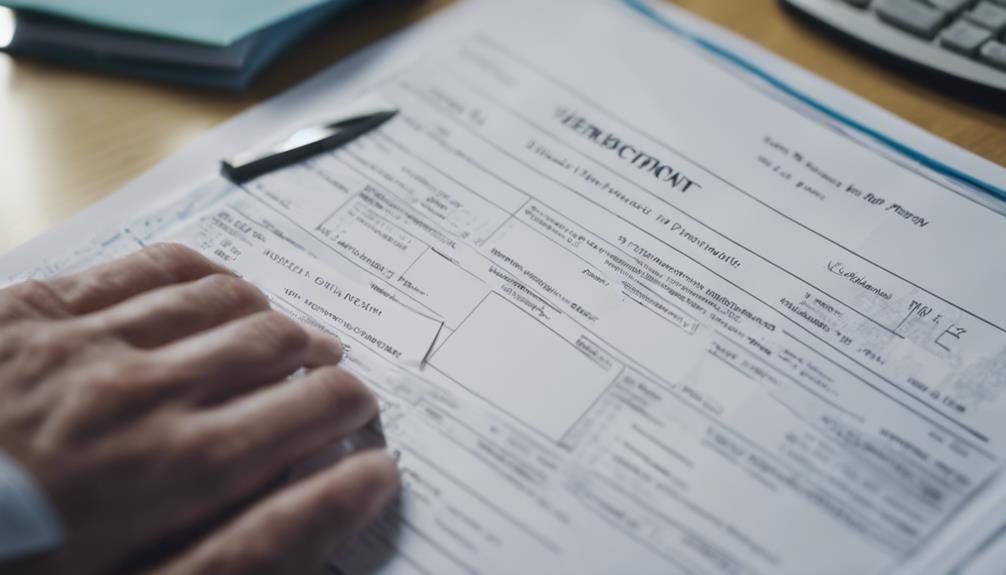Documentation for Vermont Emergency Medicaid is essential to verify eligibility and ensure timely access to critical medical care for those facing urgent health crises. Required documentation includes proof of residency, income verification, asset details, and citizenship documentation. This process guarantees that emergency Medicaid services are allocated appropriately, preventing misuse, delays, or denials in receiving vital healthcare. Proper documentation supports healthcare providers in delivering necessary services, upholds program integrity, and facilitates continuity of care for individuals in need. Understanding the significance of these documents is key to accessing emergency medical services swiftly and efficiently.
Overview of Vermont Emergency Medicaid

Vermont Emergency Medicaid provides critical healthcare coverage to eligible individuals in urgent medical situations within the state of Vermont. The application process for Vermont Emergency Medicaid involves filling out the necessary forms, providing required documentation, and meeting specific eligibility criteria. To qualify for Vermont Emergency Medicaid, individuals must be Vermont residents and have an urgent medical condition that requires immediate attention. Eligibility criteria also include having a household income that falls below a certain threshold and not being eligible for regular Medicaid or other health insurance coverage.
The application process for Vermont Emergency Medicaid is designed to be accessible and efficient for individuals in urgent need of medical care. Applicants must provide information about their medical condition, income, residency status, and any existing health insurance coverage. Once the application is submitted, it is reviewed promptly to determine eligibility.
Vermont Emergency Medicaid serves as a crucial safety net for individuals facing urgent medical emergencies who may not have access to traditional health insurance coverage.
Residency Proof Requirements
Documentation verifying residency is a crucial component of the eligibility requirements for Vermont Emergency Medicaid. To qualify for this assistance, individuals must provide proof of residency in the state of Vermont. Residency proof can include documents such as a valid Vermont driver's license, utility bills with the applicant's name and Vermont address, or a lease agreement for a Vermont residence. These requirements are essential to ensure that only residents of Vermont, who are facing emergency medical situations and meet the eligibility criteria, receive assistance through the Vermont Emergency Medicaid program.
Establishing residency is a fundamental aspect of determining eligibility for state-funded programs like Vermont Emergency Medicaid. By requiring residency proof, the program aims to allocate resources to individuals who have a genuine connection to the state and are in urgent need of medical assistance. Proper verification of residency helps maintain the integrity of the program and ensures that it serves the intended population effectively.
Applicants should be prepared to provide the necessary documentation to demonstrate their residency in Vermont when applying for Vermont Emergency Medicaid.
Income Verification Process

The evaluation of financial resources plays a critical role in determining eligibility for Vermont Emergency Medicaid. To qualify for this program, individuals must meet specific income criteria set by the state. The income verification process is crucial in ensuring that only those who truly require emergency Medicaid assistance receive it.
One of the challenges in the income verification process is the collection of accurate and up-to-date documentation. Applicants are typically required to provide pay stubs, tax returns, or other proof of income to verify their financial status. Ensuring the authenticity of these documents can sometimes be a cumbersome task for both applicants and Medicaid officials.
The importance of a thorough income verification process cannot be understated. It helps prevent fraud and abuse of the Medicaid system, ensuring that limited resources are allocated to those who genuinely need them. By adhering to strict income verification procedures, Vermont Emergency Medicaid can uphold its eligibility criteria and provide assistance to those most in need.
Asset Limitation Guidelines
Effective management of financial resources is essential in determining eligibility for Vermont Emergency Medicaid, including adherence to specific asset limitation guidelines.
When applying for Vermont Emergency Medicaid, individuals must meet certain asset limitations to qualify for benefits. Asset verification is a critical component of the Medicaid eligibility process, ensuring that only those with limited financial resources receive assistance.
Asset limitation guidelines vary by state and are designed to prevent individuals with significant personal assets from accessing Medicaid benefits meant for those in financial need.
In Vermont, individuals applying for Emergency Medicaid must provide detailed information about their assets, which may include bank account balances, real estate holdings, investments, and other valuable possessions.
Citizenship and Identity Documentation

To establish eligibility for Vermont Emergency Medicaid, individuals must provide verifiable proof of their citizenship and identity. Identity verification and citizenship confirmation are crucial steps in the application process to ensure that only eligible individuals receive benefits.
Documentation plays a vital role in this verification process, as it helps prevent fraud and ensures that resources are allocated appropriately.
Proper documentation is essential to confirm an individual's identity and citizenship status. This may include providing a valid government-issued photo ID, birth certificate, social security card, or passport. These documents help verify the identity of the applicant and confirm their citizenship status, which are requirements for receiving Vermont Emergency Medicaid.
The verification process for citizenship and identity documentation is designed to uphold the integrity of the Medicaid program and protect taxpayer dollars. By requiring individuals to provide accurate and up-to-date documentation, the state can ensure that only those who meet the eligibility criteria receive benefits.
This process also helps prevent misuse of the system and ensures that resources are available for those who truly need them.
Medical Necessity Documentation
Establishing the medical necessity for receiving Vermont Emergency Medicaid requires comprehensive documentation of the individual's health condition and treatment needs. Documentation requirements for medical necessity evaluation typically include detailed medical records, physician assessments, treatment plans, and any relevant test results or diagnostic imaging.
These documents serve to demonstrate the severity of the individual's condition, the need for immediate medical attention, and the specific treatments required.
When evaluating medical necessity for Vermont Emergency Medicaid, healthcare providers must carefully assess whether the individual's condition meets the criteria outlined by the program. This evaluation involves a thorough review of the documentation provided to ensure that the requested services are appropriate and essential for the individual's well-being.
Additionally, the documentation must clearly outline the medical necessity for each service or treatment being requested to support the approval of Vermont Emergency Medicaid coverage.
Emergency Medical Treatment Documentation

When considering Emergency Medical Treatment Documentation for Vermont Emergency Medicaid, healthcare providers must ensure that the documentation accurately reflects the immediate medical interventions required to address the individual's critical health condition. The importance of thorough documentation in emergency medical treatment cannot be overstated. Proper documentation not only ensures that patient rights are protected, but it also plays a crucial role in maintaining legal compliance. Healthcare providers must meticulously record all details of the emergency medical treatment provided, including the diagnosis, treatment plan, and any follow-up care instructions.
Failure to maintain accurate and comprehensive emergency medical treatment documentation can have significant legal implications for healthcare providers and institutions. In addition to potential legal ramifications, incomplete or inadequate documentation may also impact the individual's access to ongoing healthcare services.
Conclusion
In conclusion, the documentation required for Vermont Emergency Medicaid serves as a symbolic representation of the state's commitment to providing essential healthcare services to its residents in times of crisis.
By verifying residency, income, assets, citizenship, and medical necessity, the state ensures that limited resources are allocated efficiently and effectively.
This documentation process is not just a bureaucratic requirement, but a critical tool in upholding the values of equality, access, and compassion in healthcare delivery.
